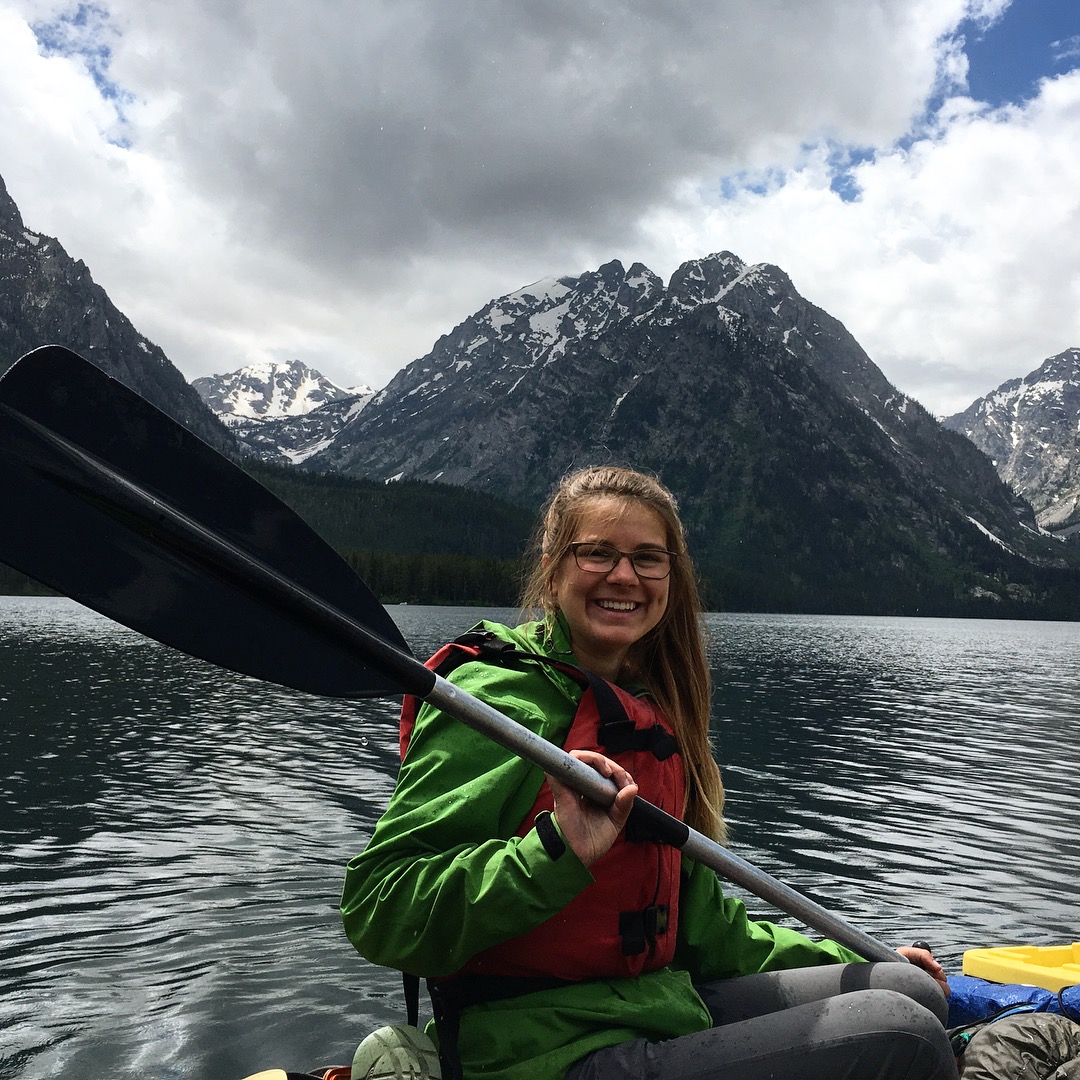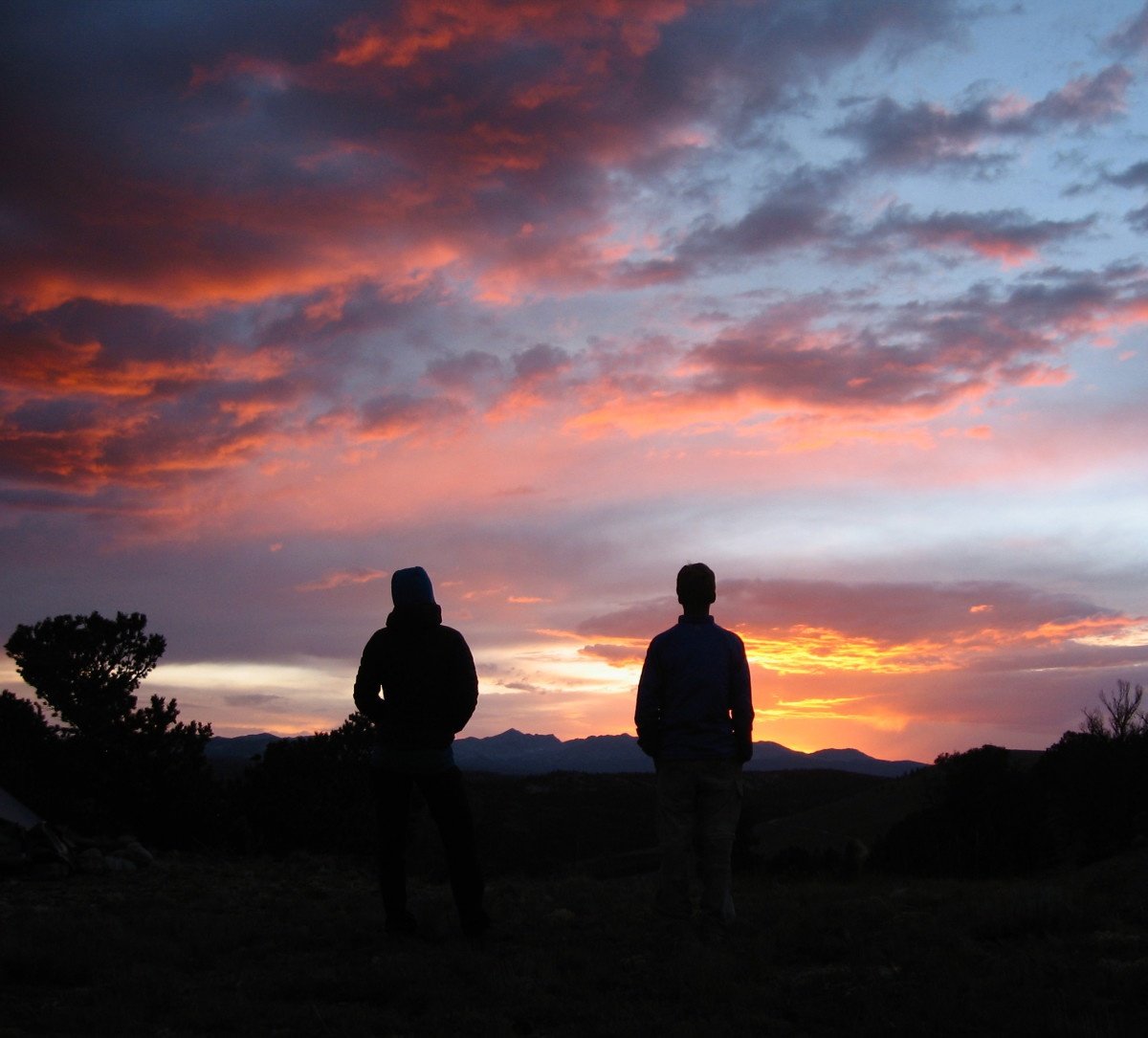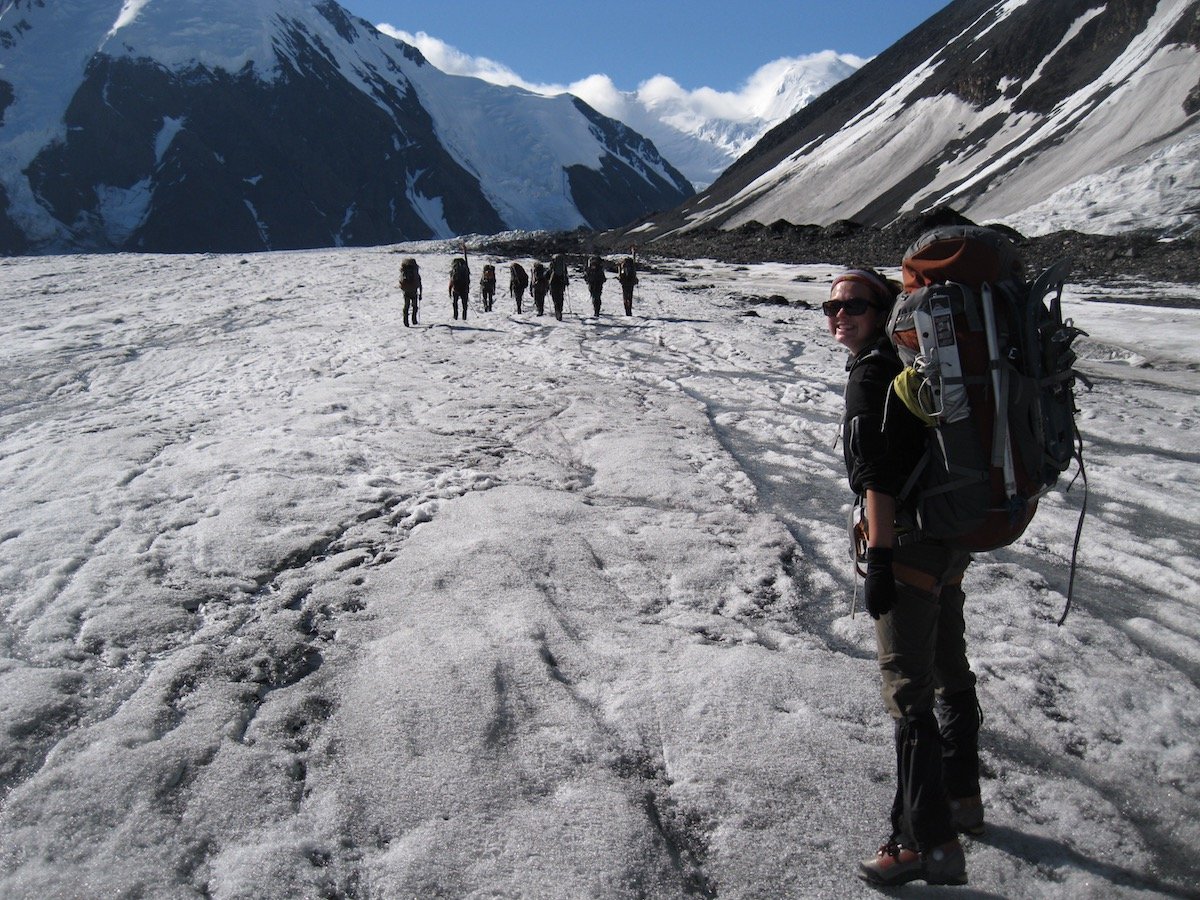
Editor's note: Katiya took a semester in Alaska in the summer of 2016 and became a NOLS instructor in May 2019.
What’s your favorite story from your course?
It’s from the mountaineering section:
It was the first bluebird day after 4 days of whiteout conditions on a glacier. My group and I were practicing our technical skills on the ice with ice axes and crampons.
The set-up for the day was to climb up a steep ice slope, practice using proper ice climbing technique, walk down a slope back to the base of the climb, and repeat.
I did not trust my crampons in the ice—I felt unsteady and uncomfortable. I took one look at the steep downhill slope—layers of pure white, deep ice—and panicked! If you’ve seen the movie Elf, the scene where he tries to get on the escalator and ends up going to the back of the line again and again, was exactly what I was doing.
One of my coursemates figured out what was happening, and said she would walk down with me. She went faster than my glacial pace, but I followed behind, trembling.
When I made it to the base I climbed up again—I believed in my up-climbing abilities. But at the top, the same thing happened again, except this time I was alone.
Everyone had started walking back down the icefield. I was far behind, not wanting to talk with anyone and thankful for the sunglasses blocking my eyes.
Then, one of my instructors dropped back to where I was. He walked right in front of me, not talking, but providing me with the support and sense of security I needed in that moment. He took his time, walking with my incredibly slow pace, silently empowering me to keep going.
When we made it back to the bottom, something shifted inside of me: I was terrified, but I did it.
I felt safe, empowered, and I wanted to continue to grow in this skill.
After that first adventure, I volunteered to lead any rope team I could, and I advocated for every ice climbing experience that could happen. I volunteered to scout for a rope team through monster crevasses and learned how to do crevasse rescues.
At the end of the mountaineering section my instructor came up to me and told me what a pleasure it was being able to coach me through my fears.
Now, I strive to be the mentor that my instructor was to me every day. I love mountaineering, I am confident in crampons, and I love all the ways glaciers make me feel small and alive.

Why did you choose the Semester in Alaska?
I was a college student who loved running, slept inside, avoided conflict with my roommates and peers, never journaled, and loved the outdoors. I always found myself in leadership positions, but I struggled to find balance between school, work, clubs, and play.
I learned about NOLS from my boss at the camp where I was working. Listening to her tell stories of adventures and the connections she made with others encouraged me to learn more about it.
I wanted to challenge myself to be the best person I could be. I wanted to test myself in ways that I hadn’t had to before. I wanted to live with and in nature and work on my skills in the outdoors. So, I signed up for the Alaska semester.
What were the different sections of your course like—backpacking, sea kayaking, mountaineering?
I enjoyed each section of my course for the different experiences they brought me.
At times, sea kayaking in Prince William Sound was like waking up in a glorious dream.
The water could be like glass, smooth and reflecting the bold colors around us. Seal pups, sea lions, sea otters, and whales could turn up anywhere. You would fall asleep to the sounds of the ocean, sometimes glacier calvings, listening to the waves crash into the beach. Watching the best nature TV around.
Backpacking in the Healy Mountain Range turned me into a good map and compass traveler.
We’d bushwhack for hours through thick willows, to be rewarded by glorious and overwhelming views over the mountains. The air was so fresh and clear. When the blueberries ripened, we added fruit to our meals. We were out so far and long without seeing any other sign of human activity.
Mountaineering was new to me—I had never done it before, and I was excited.
Denali National Park, where we spent this section, is the most beautiful place I have ever been. The first day walking on the moraine, the field of rocks at the foot and edges of a glacier, was like entering a new world. We heard the sound of the rocks hitting each other, and the only living things were moss-like plants and lichen.
But we didn’t see all this right away. When we first made camp, it rained and rained, so we all thought we were living in a wasteland (we named our campsite “Wasteland 1”).
One night, I got up to pee at 3:00 a.m.—in Alaska there is still light at that time—and I saw that we were surrounded by white mountains on every side. We were not in a wasteland at all, but an incredible glacier stretching out for forever. I was in awe.
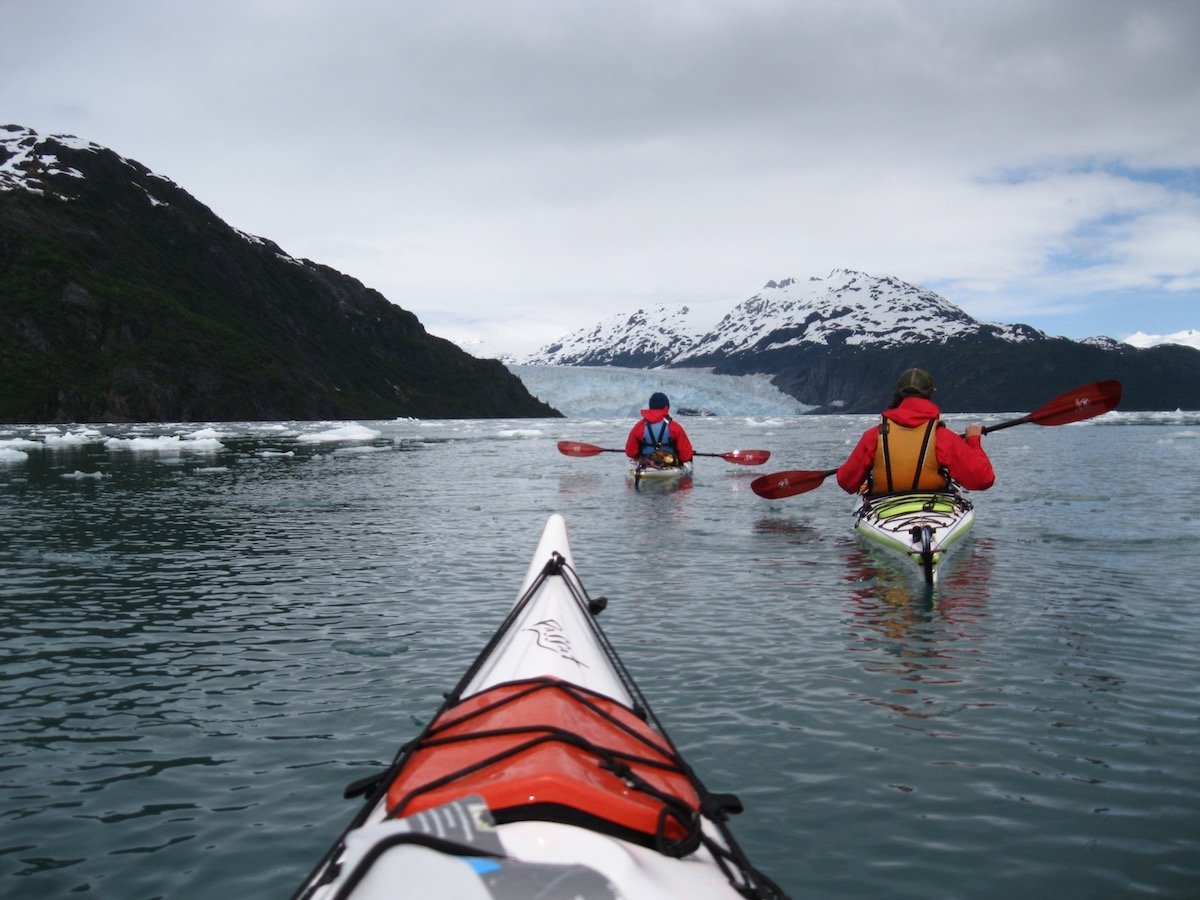
What changed for you once you returned home from your course?
On the last day of my course, I sat on the bus chewing gum, listening to music and holding an orange, wondering how I was supposed to go back to my other world after this experience.
I couldn’t sleep well inside for at least 3 months—I didn’t want to be away from nature. I was amazed by how easy it was to do the simplest of things, like grab a glass of water or drive to a grocery store. My friends would be on their phones and computers constantly, and they would get upset when I asked them about it.
On my course, I learned how to depressurize a stove, tie a knot that will anchor a tent down through a storm, self arrest in the snow, and wet exit in the water from a kayak, but the leadership skills I learned helped me grow into the person I am today. My instructors taught me that, intentionally and unintentionally, for my whole semester.
After my semester, I confronted issues right away and in ways that lifted people up; I’m no longer afraid of conflict. I still find myself in leadership roles, and I’ve learned how to say no and keep balance in my life. I seek out feedback and am always working to be the best version of myself.
I journal every single day, and there’s not a day that goes by when I haven’t thought about my NOLS course. The way the wind hits my face, or a word used in conversation, can bring me back to the powerful community of my semester.
For the first time, I felt like I belonged somewhere.
That sense of belonging has followed me through my career as an outdoor educator. It helps me build rapport and break down barriers with the people I work with. NOLS has helped me find balance in my life.
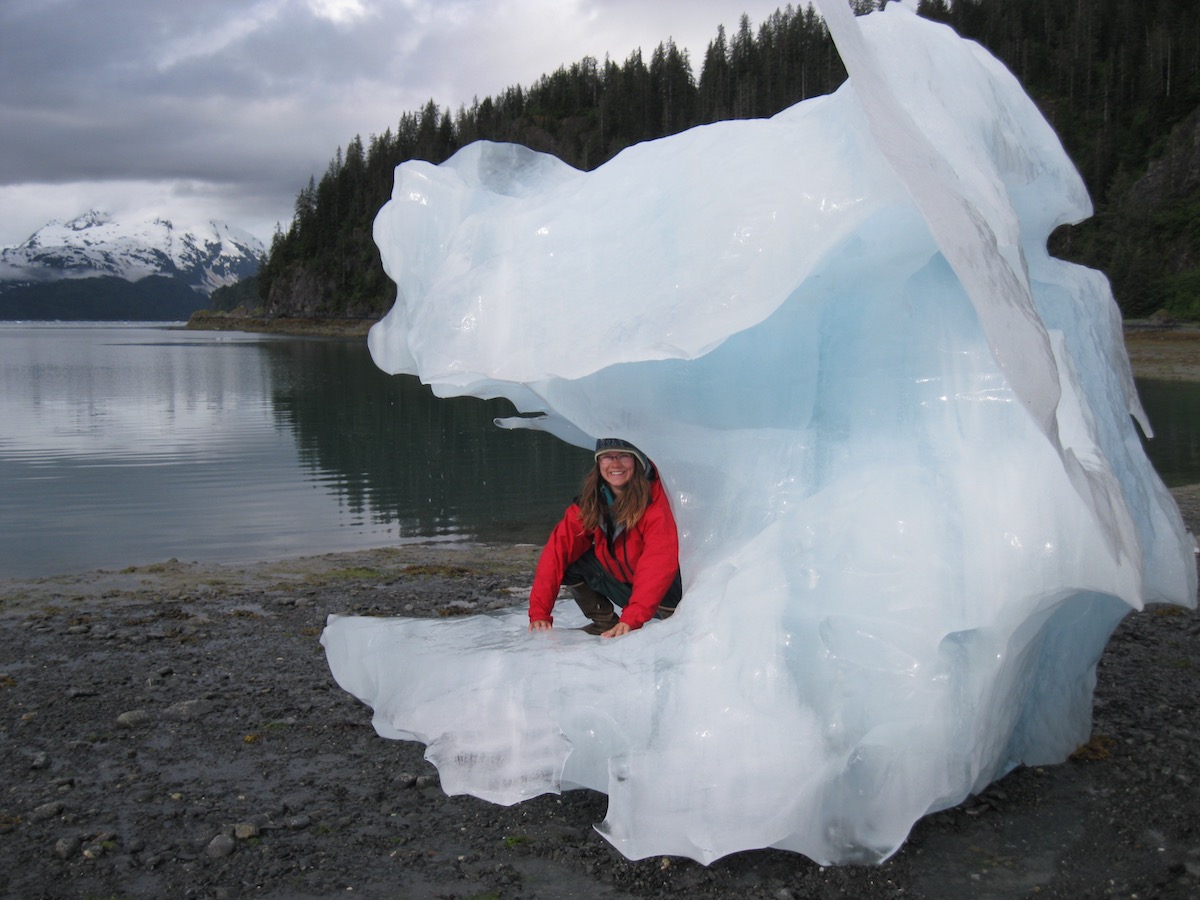
Your course was several years ago now—in what ways does it still feel relevant?
Before my semester most of my life was work: I worked 5 jobs while being a full time student, while also being the president and treasurer of 2 different organizations, and a manager at one of my jobs.
I barely took any time for myself. I was afraid to fail.
In the bush, I received feedback for something that had been consuming my life: my commitment to time and perfection. I learned that it is ok to fail, even really good to do so as long as I learn from it.
Now, as an outdoor educator and course director, I try not to put time stressors on my students, staff, or myself. I reach out for help when I need it. When I notice myself taking on too many things at once, I take a step back and delegate to someone else.
Every person I meet brings forth something different to each group I’m in, and I can learn from them in some way. The practical skills I learned helped me work in my field, and I always love academics, but empowering and inspiring others to become leaders with humility is the most important and satisfying part of my job.

What did you learn about your place in the world and relationship to nature from your course?
If you would have asked me this question three years ago, my answer would have been very different.
NOLS allowed me to feel comfortable in my relationship with nature, to feel a small part of it, to play a role in it, to know that it was mine, and that it was my home. I still feel this way. As an ultrarunner now, I feel small and strong running in the Monongahela National Forest in West Virginia; the trees, water, mud, and wildlife my only company, no cell service for days. It’s empowering to feel small.
I want everybody to feel the way that I do, to take a moment and unplug and form that bond in and with the wilderness. All 9 students from my semester came from different places and backgrounds, but our GPAs or how much money we had didn’t define us out there. In Alaska, I learned the importance of community in the world, and how, no matter where you are, you can always find community.
In my work today, I see widespread barriers to accessing the outdoors—financial, social, cultural. The barriers that exist in society still exist out there.
As I continue my work as an advocate and educator, it’s important to work toward empowering everyone, regardless of who they are or where they come from, to feel comfortable outside. My hope for wilderness spaces is that they can be a space of inclusion, and provide a neutral space for us all.
Explore NOLS outdoor educator courses.

Editor's Note: All photos courtesy of Katiya Gombar.
- Semester
- Moutaineering
- Skills
- Nols Alaska
- Backpacking
- Kayaking
- Outdoor Education
- Alaska
- Stories
- Student Stories
- Instructor Stories
- Alumni Accomplishments
Written By
Katiya Gombar
Katiya graduated from the University of Wisconsin- Stevens Point with a B.S. in Environmental Education and Interpretation. She has worked for City Kids Wilderness Project and Experience Learning Inc. Katiya is an ultra runner and in her free time can be found running and frolicking around trails in the backcountry. She is now part of the NOLS team as a Patrol Leader.


